
Dust collector inspections are essential for ensuring efficient performance, reducing fire hazards, and prolonging equipment lifespans. At A.C.T. Dust Collectors, we are here to help you put your business in the best position possible to be successful.
With our comprehensive dust collector inspection checklist, you can quickly identify problems and keep your operations running smoothly. It applies to countless industries, from woodworking to metal fabrication, offering versatile guidance for any facility producing airborne particulates. Rely on our proven expertise for a trusted, step-by-step approach backed by years of experience developing reliable dust collection solutions. Download it today to streamline your maintenance.
Prevent Downtime Using These Dust Collector Maintenance Steps
Following a structured dust collector inspection checklist is more than a best practice—it’s a proactive way to avert unexpected failures. By identifying issues early, you can keep your production line on schedule. With thorough documentation, you’ll also satisfy safety requirements and maintain a healthier working environment.
Preventative maintenance is often far cheaper than extensive repairs after a breakdown. By regularly checking filters, seals, and blower components, you’ll save thousands on emergency fixes. Plus, you’ll minimize the disruptions that can cost your operation in lost revenue and disappointed customers.
Many tasks in a dust collector inspection take just a few moments, like checking pressure gauges or clearing excess dust from hoppers. Despite their simplicity, these quick steps can drastically reduce potential safety risks. A few minutes spent on routine inspections can save countless hours of downtime later on.
Our downloadable checklist outlines each inspection point in an organized, step-by-step format. You won’t have to wonder what to check next or skip essential tasks. By following this guide regularly, you’ll be able to extend the lifespan of your dust collection equipment and avoid costly oversights. Be sure to check out our checklist today to ensure you do not overlook the most important tasks.
What Your Need in a Dust Collector Inspection Checklist
An effective dust collector inspection checklist should start with basic visual checks. Before you begin any comprehensive maintenance, confirm that the system has no visible cracks or leaks in the housing and ductwork. A simple scan for damaged components can help you catch issues early, preventing larger problems down the road.
In addition to visual inspections, include routine filter checks and replacements. Knowing when your filters are nearing the end of their life can help you maintain optimal airflow and filtration efficiency. By scheduling these tasks in advance, your team can address aging or clogged filters before performance suffers. This can go a long way toward helping you maximize your efficiency while minimizing possible errors.
System pressure monitoring is also vital, as unexpected fluctuations might signal blockages or mechanical strain. Check pressure differentials across filters, watch for anomalies in fan performance, and make note of any irregular operational sounds. Download our dust collector inspection checklist here for a complete breakdown of these steps and more so you can spot red flags well ahead of time.
Why Regular Dust Collector Maintenance Matters
Regular dust collector maintenance is crucial for maintaining consistent performance, protecting valuable machinery, and preventing harmful dust buildup. When systems are properly maintained, facilities experience fewer unexpected downtimes and safer, healthier workspaces. Most importantly, proactive upkeep helps reduce the risk of ignition or explosion from combustible dust.
In woodworking, sawdust can accumulate quickly and create a serious fire hazard. Metal fabrication processes often produce fine metal particulates that raise the explosion risk if not properly captured. Food processing facilities dealing with flour, sugar, or other ingredients must be diligent to avoid both contamination and dangerous dust clouds.
On the operational side, clean dust collectors maintain peak suction and airflow, meaning equipment runs more efficiently and consumes less energy. This efficiency translates to lower utility bills and a smaller environmental footprint. Over time, well-maintained systems also experience reduced wear, meaning you replace parts less often and see fewer repair expenses. This can go a long way toward reducing waste while maximizing the value of your most critical resources.
Who should use this checklist?
This checklist is invaluable to anyone responsible for the safety and efficiency of industrial operations. Plant managers and operations leaders can leverage its guidance to align their teams on essential inspection routines. Environmental health and safety professionals will find it especially helpful for meeting compliance standards and documenting inspections.
Even in smaller businesses, maintenance technicians can easily follow the checklist to keep dust collectors performing at their best. It is designed in a clear, step-by-step format that reduces guesswork and prevents oversight. No matter your company size, this resource can bolster your facility’s safety culture and efficiency.
For audit purposes, maintaining a written record of each inspection can serve as proof of ongoing compliance. The checklist not only helps you stick to best practices but also provides a paper trail showing that your dust collection system has been regularly and thoroughly inspected. If a regulatory body requests evidence of routine checks, you’ll have it on hand.
Trusted Maintenance Support from A.C.T. Dust Collectors
At A.C.T. Dust Collectors, our reputation for reliability stems from decades of experience helping businesses improve air quality and safety. We believe in forging partnerships with our customers, offering customized solutions and specialized guidance on dust collection best practices. Our dedication to innovation and thorough product testing ensures every system we provide meets the highest standards of performance and durability.
Beyond equipment, our team also focuses on educating clients about preventative maintenance and compliance. We stand by the idea that knowledge is power—especially when it comes to mitigating dust-related hazards. By sharing practical resources like our maintenance inspection checklist, we empower facility managers and operators to create safer, more efficient workplaces.
If you’re unsure about your dust collection system’s current performance, reach out to us for a personalized assessment. We’re here to review your setup, identify any potential improvements, and help keep your facility safe. After all, the easiest next step is to download our checklist and give us a call when you’re ready for additional support.


























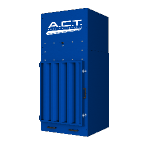
%20Collectors%20Image.png?width=143&height=143&name=ADC%20(Ambient)%20Collectors%20Image.png)
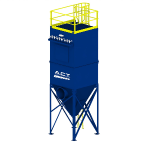

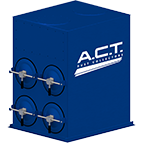
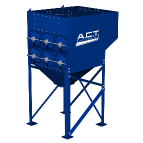
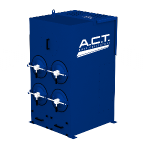


















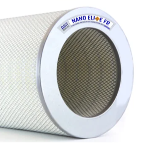


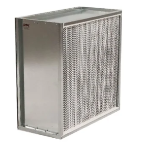
.png?width=240&height=91&name=ACT%20Dust%20Collectors%20Logo%20Solid%20White%202020%20(1).png)
.png?width=148&height=149&name=usa-manufactured-dust-collectors%20(1).png)